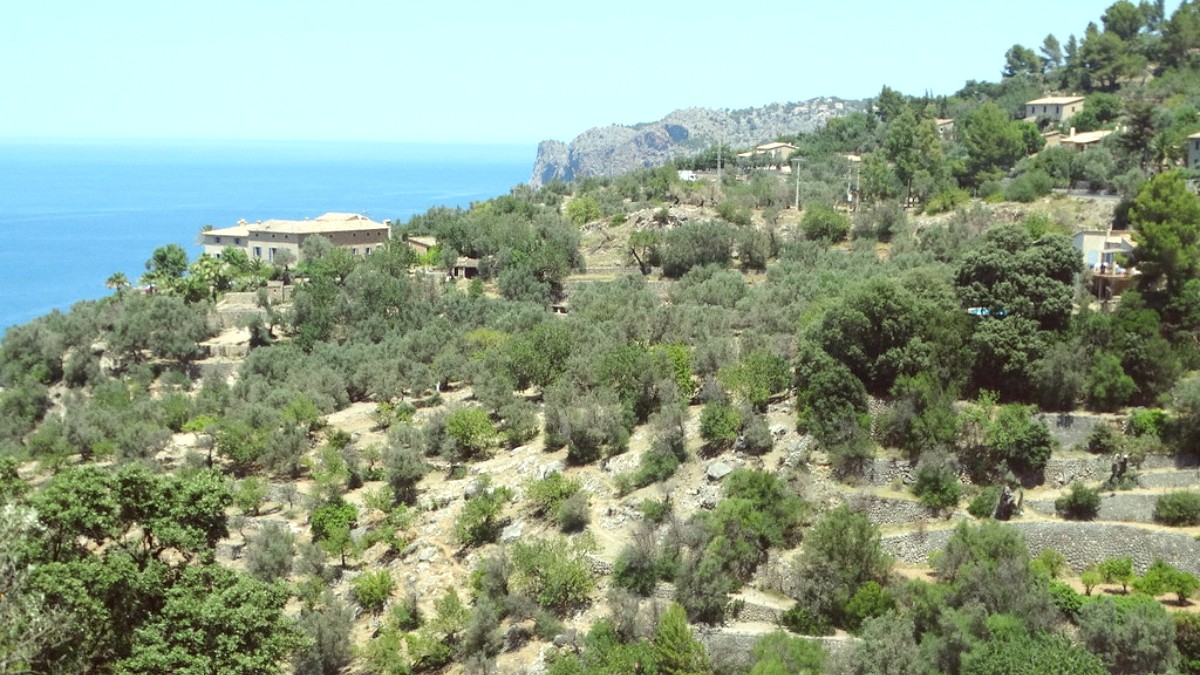
Spain
Climate patterns throughout the year feature varied temperatures and precipitation. Spring offers mild temperatures and lush greenery, ideal for outdoor exploration. Summer brings hot and dry weather, perfect for beach activities. Autumn remains warm with increasing rainfall, while winter is mild and wetter, with a peaceful atmosphere.
Soller's location within the Tramuntana mountains creates localized weather patterns, sometimes receiving more rainfall than coastal areas. Strong winds can occur, especially in winter. Always check local forecasts before mountain activities.
Soller's location within the Tramuntana mountains creates localized weather patterns. The valley can receive more rainfall than coastal areas due to its position against the mountains.
Strong winds, locally known as "Tramuntana," can occur, especially in winter, impacting sea conditions and feeling colder in exposed areas. Always check local forecasts before mountain activities.
June - August
Crowds are heavy, especially in Port de Soller and popular hiking spots. Prices for flights and accommodation reach their peak. High temperatures may limit comfortable participation in strenuous outdoor activities.
April-May, September-October
Weather is pleasant for nearly all outdoor activities, including hiking and cycling, with fewer crowds than in summer. Prices for travel and lodging are lower than in high season. Blossoming oranges in spring and citrus harvest in autumn offer distinct experiences.
Possibility of rain, especially in late autumn. Some tourist-focused businesses might begin to reduce hours towards the end of October.
November - March
Very few tourists, allowing for a peaceful and authentic experience. Prices for accommodation and flights are at their lowest. An excellent time for cultural immersion and long hikes, weather permitting.
Cooler temperatures and a higher chance of rain. Some tourist-centric businesses may close for the winter. Ferry schedules and public transport might have reduced frequency.
April-May and September-October provide ideal conditions due to mild temperatures and less intense sun. The trails are less crowded.
June-September offers the warmest sea temperatures and consistent sunshine, perfect for water activities at Port de Soller.
Shoulder and low seasons offer a less crowded experience for visiting museums, galleries, and exploring the town's streets. You gain a better sense of local life.
Late February to early April is a beautiful time to see the valley in full bloom and experience the sweet fragrance.
November to March is the time for local produce. You can buy fresh oranges and lemons directly from farms or markets.
Enjoy quiet trails and authentic local life without the crowds.
Off-peak travel lets you observe daily rhythms of the town more closely.
Spain is part of the Schengen Area, which simplifies travel for many nationalities but calls for careful attention for others.
Citizens of many countries, including the United States, Canada, Australia, New Zealand, the United Kingdom, and most EU/EEA countries, do not obtain a visa for stays up to 90 days within any 180-day period. This exemption applies for tourism or business purposes. Your passport is stamped upon entry, and the 90-day count begins.
Citizens from countries not participating in the Schengen visa-waiver program obtain a Schengen visa (Type C) at the Spanish embassy or consulate in their country of residence before travel. Apply well in advance, as processing times vary.
Spain does not impose general entry fees for tourists. Upon arrival at Palma de Mallorca Airport (PMI) or any other Schengen port of entry, you will proceed through immigration control. The process is generally straightforward for eligible travelers.
Costs vary significantly based on your travel style.
The official currency of Spain, and therefore Mallorca, is the Euro (€).
ATMs (cajeros automáticos) are widely available in Soller town, Port de Soller, and across Mallorca. They present a convenient way to withdraw cash at competitive exchange rates. Inform your bank of your travel plans beforehand to avoid your card being flagged for suspicious activity.
Daily Costs: €40-€80. Expect hostel dorm bed or basic guesthouse room (€20-€40). Meals via self-catering, picnics, bakeries (€15-€25). Reliance on public buses and walking (€5-€10). Focus on free attractions.
Cost-effective accommodation and dining options.
Limited luxury or frequent paid activities.
Daily Costs: €80-€180. A mid-range hotel, B&B, or apartment rental (€50-€100). Mix of casual restaurants, Menu del Dían options, occasional nicer dinners (€30-€60). Public transport, occasional taxi or shared rental car.
Comfortable stays with varied dining and transport options.
Limited high-end experiences or private transfers.
Daily Costs: €180+. High-end hotels or luxury villas (€100-€400+). Fine dining experiences and gourmet meals (€60+). Private transfers, dedicated rental car, or frequent taxi use. Opt for private tours, spa treatments, exclusive experiences.
Premium comfort, exclusive services, and gourmet dining.
Higher daily expenses compared to other styles.
| Category | Item | Price Range (€) |
|---|---|---|
| Accommodation (per night) | Hostel/Guesthouse | 20-50 |
| Mid-range Hotel/Apartment | 60-150 | |
| Luxury Hotel/Boutique Stay | 150-400+ |